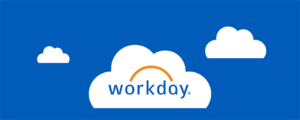 Workday is a new generation enterprise business service software application that combines payroll, human resources, finance, and purchasing. This cloud-based enterprise application combines an innovative approach and lesser cost of possession.
Workday is a new generation enterprise business service software application that combines payroll, human resources, finance, and purchasing. This cloud-based enterprise application combines an innovative approach and lesser cost of possession.
Overview
Workday has impacted the way our business operates, so much so that it now contributes to our strategy going forward as it relates to growth, expansion, and new opportunities for our clients and our employees.
Workday is a new generation enterprise business service software application that combines payroll, human resources, finance, and purchasing. This cloud-based enterprise application combines an innovative approach and lesser cost of possession.
Description
This module will introduce you to Workday. Starting off with basic concepts of how to navigate, what are Landing pages, how to slide out and create Hyperlinks and much more.
- What are the Business Objects?
- Basic Workday Navigation Landing Pages
- Related Action Menus in Workday
- Search, Slide-out tabs in Workday
- Hyperlinks and Additional Navigation Topics in Workday
- What are Actionable Reports, Single and Multi-select prompt fields in Workday
- Setting up Standard Screen Icons and Task Page Icons in workday
- Work-feed Workday Configuration options and Find Worker
Who can Join?
- Basic knowledge of Human Capital Management (HCM).
- It would be an added advantage if a trainee has experience in HR and recruitment.
Modules
Unit 1: Reports
- Report Writer Overview
- Report Types
- Standard report
- Developing Simple, Advanced Reports
- Advance field calculations
- Custom report Types
- Sharing Reports
- Data sources
- Business Object
- Scheduling reports
- How RW works
Unit 2: Calculated Fields
- Calculated Field Concepts
- System wide vs. Report Specific Calculated Fields
- Global Calculated Fields (e.g. Constants)
- Calculated Field Dependencies
- Available Functions, such as:
- Date Calculation and Formatting Functions
- String and Text Functions
- True/False Conditions
- Evaluate Expression
- Lookup Functions to leverage hierarchies
- Functions that access Related Business Objects
- Lookup Value as of Date
- Arithmetic Calculations
- Key Reports & Resources
Unit 3: Core Connectors
- Integration Architecture Overview
- Integration cloud Connect
- Integration System templates
- Core Connector: Worker
- Integration Services in Core connector
- Change Deduction Procedure in Core Connectors
- Integration business Process
Unit 4: EIB
- EIB Overview
- EIB Design Pattern
- EIB Limitations
- Workday Public Webservices overview
- Workday Reports-as-a-Service
- Developing an Inbound EIB
- Developing a Outbound EIB
- Custom Report Transformation
- EIB Features
- Loading Customer Transactional Data into Workday using EIB’s
Unit 5: Workday Studio
- Introducing Workday Studio
- Workday Studio Install
- Workday Studio Navigation Tips
- Studio Runtime Architecture
- Features and Navigation of Workday Studio
- Workday Studio Assemblies (integration systems) Components
- Basic Flow of Control Between Assembly Components
- Basics of Web Services, XSLT, and MVEL in Workday Studio
About Trainer
- Having 11+ years of experience in the Industry
- Working as a Senior Software Engineer
- 4 years of experience in AWS
